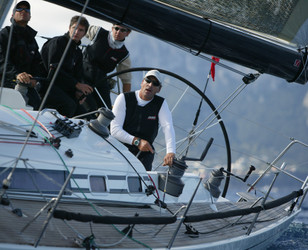Give the brake a break
Posted by Dave on Sep 22nd 2022
Wheel brakes are a huge convenience. With a well balanced sail plan, your wheel brake can mind the helm while you adjust the jib trim or grab a snack from the icebox. There are, however, common things that brakes get used for for which they aren't really suited and will cause premature wear - sometimes quite rapidly.
The first is locking the wheel on the mooring. We all love to think we're going to use our boats more than we wind up being able to, so the unfortunate fact is that boats sit on the mooring far more than we'd prefer. When the breeze and chop come up and the boat starts swinging, the pivot point of the swing is forward which gives a sailboat's (usually large) rudder tons of leverage. Preventing the rudder from swinging back and forth is of course a must - the steering gear is exposed to tremendous wear and damage potential if left to just swing and smash back and forth against the rudder stops. Friction brakes, especially thru-shaft brakes, aren't well suited to this job. Side-mount brakes, like those found on our classic 335 pedestals, are better suited to this than thru-shaft brakes because of their design, but even side-mount brakes have limitations on the mooring. In order to get enough bite on a thru-shaft brake to prevent the rudder from swinging, you stress the snap rings in the steerer shaft to their breaking point. Not coincidentally, snap rings are a very popular replacement part.
A much more secure approach to the mooring question is to loop sail ties to either side of the wheel and tie them off to a winch, the toe rail, or a stanchion base. Some autopilots have a "lock" position which can be used as a mooring brake, but consult your autopilot's manual before going there.

Many sailors leave some amount of brake pressure on when they're just sailing, or when their autopilot is doing the work. Honestly, I'm not sure why people do this. Perhaps to help with weather helm in fresh breeze? If that's the case, you will have much better results by depowering the sail plan - make sure the main halyard raised to the max, increase backstay tension if that's available, max the outhaul tension, increase vang and cunningham tension, drop the traveler, increase jib halyard tension, and move jib leads aft - than by asking the wheel brake to do a job for which it's poorly equipped.
Just like if you were to drive your car with your foot resting on the brake pedal, having your wheel brake on when it's not the time for it will cause premature wear or inspire you to put so much tension on the brake that you break a snap ring and cause a bigger issue.
Wheel brakes are great for what they're good at, but be aware of their limitations.

